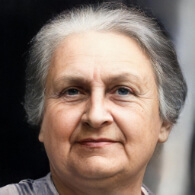Help from Periphery (Montessori)
In Montessori education, Help from Periphery refers to the approach of presenting objects and activities in a way that encourages purposeful movement from the child. The periphery here denotes the part of the child that interacts with external reality through the senses and movement.[1] This approach operates under the belief that we should engage the child's hands and physical interaction as much as their visual perception, thus promoting active, hands-on learning.
Montessori Quotes
- "The hands are the instruments of man's intelligence."[2]
- "The development of the hand lags behind because we do not respect it enough."[3]
Research and Critiques
- Pros: The approach of help from the periphery aligns with research on kinesthetic learning and the benefits of physical engagement in cognitive development. This approach can enhance children's fine motor skills, spatial reasoning, and sensory integration.[4]
- Cons: Critics argue that this approach may undervalue other forms of learning such as auditory or visual learning. They also suggest that certain concepts may not lend themselves to physical manipulation and require more abstract thinking.[5]
Comparisons to Other Methods
While traditional education often emphasizes visual and auditory learning, Montessori education prioritizes hands-on activities and sensory experiences, reflecting a belief in the importance of engaging the whole child in the learning process.[6]
See Also
Glossary of Montessori Terms
The Glossary of Montessori Terms is a collection of specific terms and vocabulary that are related to the Montessori method of education, primarily focusing on the theory and practice for children aged 3 to 6. The jargon used by Montessori educators offers a unique insight into child development as discussed by Maria Montessori. The 'Montepedia Glossary of Montessori Terms' originated from a glossary that was compiled by the late Annette Haines from the Montessori Training Centre of St. Louis, at the request of Molly O'Shaughnessy from the Montessori Centre of Minnesota. The reason behind the creation of this glossary was to supplement O'Shaughnessy's lecture at the Joint Annual Refresher Course that took place in Tampa, Florida, in February 2001.[7] The glossary has since been expanded and updated with additional 'Montessori Terms'.
- 3-Hour Work Cycle
- Absorbent Mind
- Adaptation
- Adolescence
- Albums
- Advisor
- Analysis of Movement
- Casa dei Bambini
- Children of the Earth
- Children's House
- Choice
- Classification
- Concentration
- Concrete to Abstract
- Control of Error
- Coordination of Movement
- Cosmic Education
- Creativity/Imagination
- Cycle of Activity
- Development of the Will
- Deviations
- Didactic Materials
- Director
- Discipline from Within
- Earth Child
- Elementary Classroom
- Erdkinder
- Exercises of Practical Life
- False Fatigue
- Freedom of Choice
- Freedom within Limits
- Grace and Courtesy
- Great Stories
- Ground Rules
- Guide
- Help from Periphery
- Human Tendencies
- Imagination
- Independence
- Indirect Preparation
- Indirect Presentation
- Isolation of a Difficulty
- Intrinsic Motivation
- Job
- Kinderhaus
- Language Appreciation
- Language Acquisition
- Learning Explosions
- Materials
- Materialised Abstractions
- Mathematical Mind
- Maximum Effort
- Mixed Ages
- Montessori Materials
- Nido
- Montessori Materials
- Normalization
- Obedience
- Peace
- Personality
- Planes of Development
- Points of Interest
- Practical Life
- Phonemic Awareness
- Phonics Instruction
- Phonological Awareness
- Prepared Environment
- Presentation
- Primary Classroom
- Psychic Embryo
- Reading Comprehension
- Repetition
- Respect
- Self-Discipline
- Self-Regulation
- Sensitive Periods
- Sensorial Materials
- Simple to Complex
- Socialization
- Society by Cohesion
- Sound Games
- Three-Hour Work Cycle
- Valorisation
- Vocabulary Enrichment
- Work
Please help to translate this page into your local language
References
- ↑ Standing, E.M. (1957). Maria Montessori: Her Life and Work. Plume.
- ↑ Montessori, M. (1936). The Secret of Childhood. Longmans, Green and Co.
- ↑ Montessori, M. (1936). The Secret of Childhood. Longmans, Green and Co.
- ↑ Lillard, A. (2017). Montessori: The Science Behind the Genius. Oxford University Press.
- ↑ Egan, K. (2002). Getting it wrong from the beginning: Our progressivist inheritance from Herbert Spencer, John Dewey, and Jean Piaget. Yale University Press.
- ↑ Mooney, C. (2013). Theories of Childhood, Second Edition: An Introduction to Dewey, Montessori, Erikson, Piaget & Vygotsky. Redleaf Press.
- ↑ Haines, A. (2001). Glossary of Montessori Terms. Montessori Training Centre of St. Louis.
